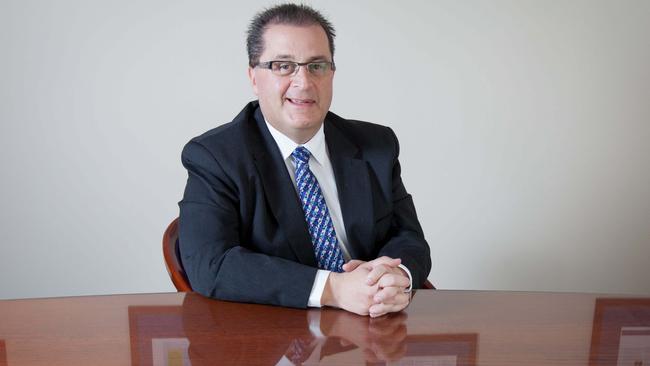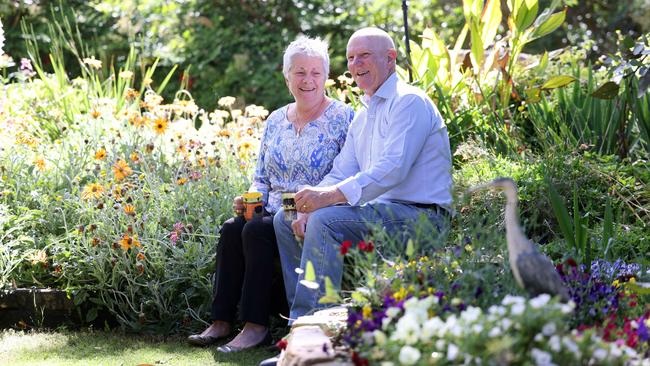Superannuation growth: a few tweaks can double your balance
Your future wealth depends on what you do with your money now, and making some changes to superannuation can multiply it.

Superannuation doesn’t enter many Australians’ minds until their forties, but its potential growth over the following three decades can be spectacular.
A six-figure account balance is often a tipping point for savers to start thinking about super, and the average super balance of people aged 35 to 39 currently sits near $112,000 – about $131,000 for a man and $93,000 for a woman, according to Deloitte and AustralianSuper.
What people do next can power their nest egg towards a wealthy retirement with relatively little effort.
We’ve crunched the numbers using Moneysmart.gov.au’s superannuation calculator and found much of the work is done by compulsory employer super contributions, currently 10.5 per cent of wages and rising to 12 per cent by July 2025.
AUTOMATIC SAVINGS
Working full-time will push an average 40-year-old employee’s balance from $100,000 to above $500,000 in today’s dollars by age 67, but a combination of salary sacrifice, lump sum payments and tweaking investments can potentially propel it beyond $1 million.
Financial strategist Theo Marinis suggests a simple strategy: put extra money into super “as soon as you can, as much as you can, for as long as you can”.
“The secret of super is compound interest and the sooner you start, the more compound interest you receive,” he says.

Australians can make voluntary tax-deductible contributions to their super at any time but Marinis suggests using salary sacrifice, so you won’t have to conjure a cash lump sum at the end of each financial year.
“It’s easier to do salary sacrifice because it is taken out of your pay, so you won’t worry about it – you get your pay and you live with that,” he says.
“If you don’t receive the money, you don’t spend it.”
JBS Financial Strategists CEO Jenny Brown says rising compulsory super payments means young workers in their twenties will probably have enough for a comfortable retirement, but those in their forties and fifties “still need to be doing top-ups because you haven’t had that high level of contributions for as long”.
“Look at your cash flow and marginal tax rate – could you be topping up to the maximum concessional contribution limits?” she says.
Tax deductible contributions, known as concessional contributions, of up to $27,500 annually per person are allowed, but this includes employer payments.
CATCH-UPS
People with less than $500,000 in super can also make catch-up concessional contributions for previous years when they didn’t hit the concessional limit. There are also much higher limits for annual after-tax, non-concessional contributions.
“Take an active interest in super – know where it’s going,” Brown says.
“Life insurance is great but there needs to be a requirement for it. If you’ve paid down debt and your spouse doesn’t need a lump sum, do you need insurance?”
Chris and Heather Catlin are drawing down from their nest eggs but still see superannuation as dynamic.
“It is not a case of set and forget – over time our needs and objectives can change,” he says.

“We review our strategy every six months and tweak where necessary.
“We continue to seek tax-effective opportunities for our super to grow further, not only for us, but also for our children and grandchildren.”
Marinis says people can use free calculators provided by moneysmart.gov.au and super funds to project their future balances and understand the power of compound interest.
“Just put money away on a regular basis – that’s all you have to do, and you are saving tax right now,” he says.
“Super is long term so does it matter what happens in the next two or five years? It’s what’s going to happen over the next 20 years.”
HOW $100,000 GROWS
(For a 40-year old earning the average Australian wage of $92,000)
• Relying on employer contributions alone, the balance increases to $514,000 in today’s dollars by age 67
• Salary sacrifice $50 a week and the balance becomes $596,000.
• Increase the salary sacrifice to $100 a week and it’s projected to grow to $678,000.
• Switching investment options from default to more aggressive – earning an extra 1% annually – increases the end balance to $917,000.
• A $100,000 lump sum contribution – from the sale of an investment – made at any time will push the nest egg well above $1 million.
Source: Moneysmart.gov.au superannuation calculator






To join the conversation, please log in. Don't have an account? Register
Join the conversation, you are commenting as Logout